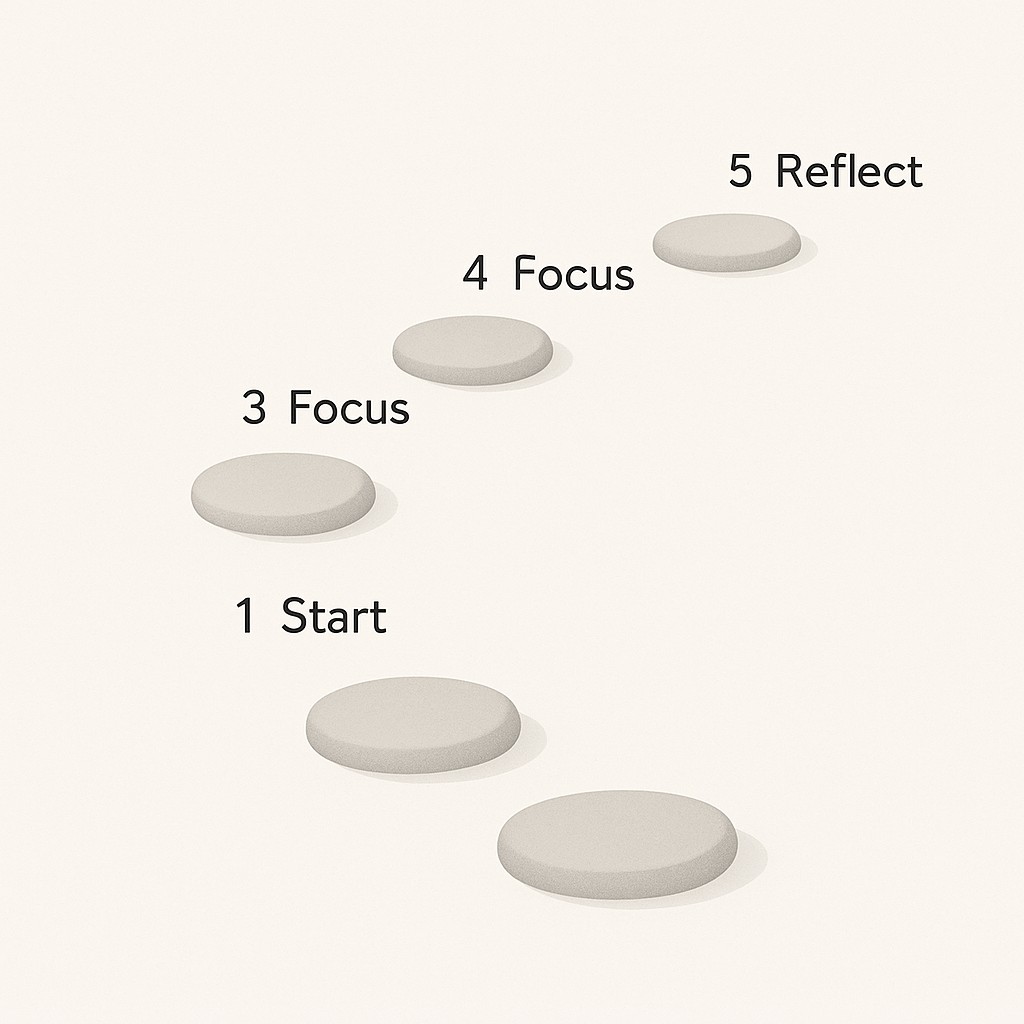Why Wait for January? Stop Procrastinating on Goals and Build Momentum Now
Why Wait for January? Stop Procrastinating on Goals and Build Momentum Now

Why Wait for January? The Hidden Cost of Deferring Progress
For months, “Azure Solutions Architect exam” has just sat there on my to-do list, quietly collecting digital dust. Every time I thought about picking it up, some excuse showed up in my head, usually something like, “I’ll dive in with a fresh start next year.” I let myself off the hook, thinking more time would magically make it easier.
Then, one Friday afternoon scrolling through podcasts (not even looking for motivation, honestly), I heard Shaan Puri on My First Million just blurt it out: “Why wait for January?” It hit different and made me decide to stop procrastinating on goals. He was right—December doesn’t have to be a dead zone. There are still weeks left. There’s still progress and momentum to salvage.
So I took his advice literally. I bought an AZ-305 course that same day and blocked time on my calendar for a first study session before I could back out. Not January. Now. Stumbling progress beats perfect intentions.
I see this all the time with other engineers, especially in ML and AI work. The habit is universal—waiting for that ideal Monday or the next quarter, telling ourselves we’ll have more focus later, or that we’ll “start strong” after the holidays. But it rarely plays out that way. We lose momentum and stall our learning—so stop delaying your goals and actually ship things that matter. I’m not immune. My excuse was always “I’ll start fresh next year.” Maybe yours has a different label.
The truth? Your timeline isn’t the calendar’s. Progress starts as soon as you act, not when the calendar tells you it’s allowed. Take the first small step now. It knocks down the invisible wall and makes everything after a little easier.
Why Waiting Feels Rational—and Why It Isn’t
Getting started is always the hardest part. With the AZ-305, it wasn’t the workload or the content that tripped me up—it was the inertia. There’s this invisible force at play: activation energy. It’s the barrier that stands between thinking about doing something and actually doing it. The wild part? When you make even the smallest move, it can lead to outsized long-term benefits—small changes snowball into real life improvement across habits and routines. The very first action lowers that wall, making the next one way easier.
But why do so many of us wait for January or any other “fresh start”? It’s all rooted in the fresh start effect. January feels like a clean slate, even though it’s mostly psychological, not operational. Motivation jumps at calendar milestones—a birthday can boost gym visits as much as keeping the gym open two more hours. The calendar isn’t the thing that actually moves our projects forward.
Here’s a weird thing that keeps happening to me. Every time I clean out my coffee grinder—yeah, slightly random, but hang with me—I tell myself, “This will definitely make tomorrow’s brew better.” Then I forget, and a week later I’m dealing with bitter grounds again. All this faith in new starts, and half the time, I loop right back to the same messy place. That’s kind of how it goes with big resolutions too.
Now, if you’re juggling ML models, prod incidents, or sprint dashboards, you already know the real constraint isn’t motivation—it’s time and pure cognitive load. The last thing you want on a busy on-call week is another context switch. Back when I started at my current role, I saw all study tasks as “big” tasks that needed a cleared afternoon—but that’s a lie we tell ourselves. Micro-steps—like logging into the course, skimming the syllabus, or jotting down two questions—shrink the activation barrier so you can squeeze progress into moments that would otherwise disappear.
You can debug an experiment, push a PR, and kick off one certification module in the same week if you break the tasks small enough. You build momentum today with quick wins instead of bottlenecks.
There’s a second trap people hit: perfection. That nagging worry that a rushed or messy first attempt isn’t worth starting at all. Honestly, most of my first stabs at exam prep look like half-baked notes and scattered bookmarks. But messy starts are scaffolding. They speed up iteration later. If you can get something on the board now, you’ll refine it twice as fast once the wheels are turning.
How to Stop Procrastinating on Goals: Move from Intention to Action—Today, Not Next Year
So what does “one small, intentional action” actually look like? Forget grand plans for a second. It’s logging into the portal and enrolling in a single Azure module. Spinning up a fresh repo for the project you keep talking about. Pick your dataset and overcome analysis paralysis instead of obsessing over whether it’s perfect. Adding just one test case, even if it’s basic.
If it’s something you can do today without prepping, it’s the right size—simple, concrete, and over in under half an hour.
Here’s how I flipped my own switch with the AZ-305. I bought the course and blocked out a study slot for Wednesday at lunchtime—calendar event, notifications on, no excuses. You can do the same, no matter what you’re building. Pick a tool—Notion, Google Calendar, a Post-it taped to your monitor. When folks blocked out an exact time and place, 91% followed through on their exercise goal—more than twice the usual rate. Put a real slot down for this week. Don’t wait until all the stars align. Anchoring your first step in time is what pushes it off your mental back burner.
If you want to lean into momentum a little more, tell someone about the step you’re taking. Slack channel, group chat, that friend who’ll double-check on you next week—whatever works. You don’t need a detailed template or to blast it on the internet (unless you want to!); it’s about nudging yourself past inertia by leaving a visible trace.
Quick story. A teammate once kept postponing a refactor until “after release”—but in a lull, he spent 15 minutes running the linter. It found a bug that would’ve cost us hours post-launch. That tiny action opened the door early and paid off huge. Small starts aren’t low-impact; they’re leverage.
So here’s your challenge: stop procrastinating on goals—pick a 30-minute block this week, name your smallest viable step, and make it visible. You’re not just doing a task—you’re staking out momentum before January shows up.
An Anti-Deferral Playbook: Five Days to Concrete Progress
Let’s make this real: here’s a day-by-day game plan you can actually follow.

Day 1—start on your goals by choosing just one thing you’ve been putting off (Azure Solutions Architect exam, unfinished ML experiment, lingering product PR, whatever) and define the smallest possible action that “counts” as starting. Jot it somewhere you’ll see it.
Day 2—handle the friction points. Log into the right portal, confirm credentials, install what you need—basically, clear out any blockers that would make you stall when it’s time to work.
Day 3—protect 25 minutes for deep focus. One block. Close the tabs, mute everything else, and do only the next step, however rough.
Day 4—post your proof of work (screenshot, log, commit, forum post) somewhere others can see it, then write down what comes next—no heroics, just keep the chain alive.
Day 5—ask yourself: what got easier? Capture that, and lock in a block for next week before this new habit slips away.
The real killer of progress is endless context-switching. If you want to cut the cost, block your study or build time as non-negotiable (put a meeting on your own calendar), launch just one browser tab—no Discord, no Twitter—and always end with a quick “next action” note so you know exactly where to pick up. It sounds simple, but it’s the difference between picking back up quickly and spending 10 minutes figuring out where you left off.
Don’t stress over perfect work at the start. Ship scaffolding—half-baked notes, test files, notebooks with TODOs in the cells. You don’t need a clean demo yet. Actually, that first “commit” should include a clear next move (as a message or checklist). All you owe yourself is momentum, not polish.
If you’re stuck, here’s how this might look: For certifications, it’s just finishing one AZ-305 module, not the whole course. For ML/AI, to overcome procrastination for developers, maybe it’s a short training run or prepping a tiny dataset split, not a production model. For product, it’s toggling one tiny feature flag or writing the first failing test. Each “one thing” should feel almost too small to put off—then you’re doing it right.
Looping back to December—my own activation energy shifted after that first session. Just setting up the course material for AZ-305 wasn’t ground-breaking in itself, but it lowered my barriers so much that the next time, studying felt obvious instead of overwhelming. These wins stack. Once you’re moving, your future self just keeps stepping forward.
And honestly, I still wind up procrastinating some days. Not everything gets done on the first try. There’s probably some trick I’m missing about getting started every single time, but I haven’t nailed it yet.
Convert Commitment: Make It Public, Make It Count
Here’s the deal. Don’t wait until 2025 when you can still crush 2024. Pick one goal you’ve been deferring—big or small—and commit to starting this week. This isn’t about overhauling your life. It’s just about making a move now, before the calendar flips.
Your Move: What’s one goal you’ve been putting off until next year? Write it down, take one action this week, and end the year on a high note.
If you’re ready, make it public. Like or comment below with your goal, or drop it on your team chat—the point is to get it out of your own head and into the world. Let’s hold each other accountable and finish 2024 stronger than ever. That tiny act of posting is proof you’re moving for real.
Make your commitment visible today—use this AI-powered app to draft a quick update, share your goal, and publish a clean post in minutes without getting stuck on wording.
Progress doesn’t depend on the calendar, even in December.
Start now, and January isn’t a restart—it’s just the next step. Momentum compounds. Your future self will thank you.
Enjoyed this post? For more insights on engineering leadership, mindful productivity, and navigating the modern workday, follow me on LinkedIn to stay inspired and join the conversation.
You can also view and comment on the original post here .
